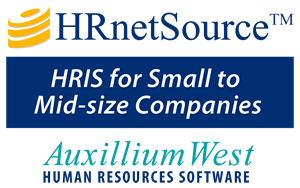Regulatory Reporting
Purpose of Process (see below how HRSource™ can help):
To comply with major federal regulations and avoid penalties for non-compliance.
Major Regulatory Reporting Requirements:
EEO-1 Reports
Companies with at least 100 employees or companies with 50 or more employees and government contracts of $50,000 or more (achieved the headcount threshold for any one pay period from July through September of the survey year), must submit an EEO-1 report annually to the Joint Reporting Committee (EEOC and OFCCP). The EEO-1 report lists the number of employees by race and sex for each EEO Job Category (see sample form and EEO-1 category descriptions). A separate form must be submitted for each site with 50 or more employees. A consolidated report is required to include all employees from all sites, regardless of size. The Joint Reporting Committee requests that company representatives contact them directly to order a customized form (provide your company name and address). Their phone number is 1-866-286-6440 and web site can be reached here. For more information from the EEOC's website, click here.
Vets-100/100A Reports
Companies with Federal contracts or subcontracts of $25,000 or more entered into before December 1, 2003, must submit an annual Vets-100 report no later than September 30 of each year. The Vets-100 report lists the number employees and recently hired employees by veteran status. The VETS-100A Report is to be completed by all nonexempt federal contractors and subcontractors with a contract or subcontract entered into or modified on or after December 1, 2003, in the amount of $100,000 or more.
The form can be submitted by email, or submitted online. The DOL
website has further information on how to file your forms.
OSHA 300 Reports
The Occupational Safety and Health Act (see also the Workplace Safety and Health process) requires that companies with 10 or more employees track, post and submit a report to the Federal government on work related injuries using the OSHA 300A form. This form must be posted on the company bulletin board(s) each year from February through April. View additional information on the OSHA web site.
The Personal Responsibility and Work Opportunity Reconciliation Act requires employers to notify the state of all new hires. This information is used to locate individuals who are delinquent in child support payments. Your payroll service may be willing to fulfill the reporting requirement (see the sample form for the State of California). More information on this law is included.
Reporting Requirements under the Employee Retirement and Income Security Act of 1974 (ERISA)
ERISA is a law that regulates qualified health and retirement plans. The Department of Labor (DOL) administers the ERISA enforcement, and the Internal Revenue Service (IRS) enforces the non-discrimination rules and plan qualification requirement contained in the Internal Revenue Code (IRC). Companies with qualified health plans (benefits are not taxable to the employees) and retirement plans (such as a 401(k)) are subject to the ERISA reporting requirements, which are summarized in the chart below. The DOL has issued guidelines on communicating this information electronically.
|
Item |
Where to File or Disclose |
When to File or Disclose |
|---|---|---|
|
Annual Report (5500) |
IRS, who forwards it to the Dept of Labor. |
Within 7 months after the end of the plan year. |
|
Summary Annual Report (SAR) |
Plan participants and beneficiaries. |
Within 9 months after the end of the plan year. |
|
Summary Plan Description (SPD) |
Plan participants and beneficiaries (and the DOL upon their request). |
New plans - 120 days after effective date or date of adoption, whichever is later. New participants - within 90 days of eligibility.* |
|
Summary Description of Material Modification of Plan (SMM) |
Plan participants and beneficiaries (and the DOL upon their request). |
Within 210 days after the end of plan year in which modification or change was adopted. |
|
Statement of Accrued/Vested Benefits |
Plan participants and beneficiaries. |
30 days after written request; no more than once in 12 month period. |
* SPD's must be updated every 5 years if there are material modifications, 10 years in any event.
Process Tips:
This list does not include all regulatory reporting requirements that an organization may have. For example, for those companies with a defined benefit (retirement) plan, the Pension Benefit Guarantee Corporation (PBGC) regulates insurance of defined benefit plans, determines what events are reportable and contains regulations on annual report requirements. Also, the Occupational Safety and Health Act includes reporting requirements.
HRSource™ includes many government-required reports, including the EEO-1, OSHA 300, 300A and 301, Vets 100 and 100A, the new hire registry, and more.
